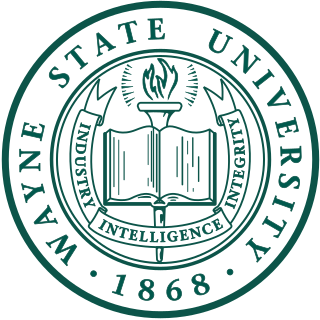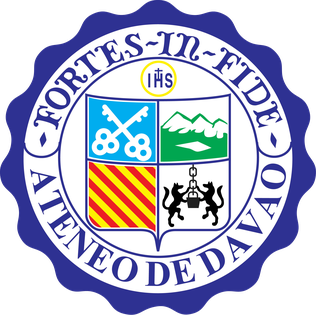
Princeton University is a private Ivy League research university in Princeton, New Jersey, United States. Founded in 1746 in Elizabeth as the College of New Jersey, Princeton is the fourth-oldest institution of higher education in the United States and one of the nine colonial colleges chartered before the American Revolution. The institution moved to Newark in 1747 and then to its Mercer County campus in Princeton nine years later. It officially became a university in 1896 and was subsequently renamed Princeton University.

The University of California, Los Angeles (UCLA) is a public land-grant research university in Los Angeles, California, United States. Its academic roots were established in 1881 as a normal school then known as the southern branch of the California State Normal School which later evolved into San José State University. The branch was transferred to the University of California to become the Southern Branch of the University of California in 1919, making it the second-oldest of the ten-campus University of California system after the University of California, Berkeley.

Washington University in St. Louis (WashU) is a private research university in St. Louis, Missouri, United States. Founded in 1853, the university is named after George Washington, the first president of the United States.

Temple University is a public state-related research university in Philadelphia, Pennsylvania, United States. It was founded in 1884 by the Baptist minister Russell Conwell and his congregation at the Grace Baptist Church of Philadelphia, then called Baptist Temple. Today, Temple is the second-largest university in Pennsylvania by enrollment and awarded 9,128 degrees in the 2023-24 academic year. It has a worldwide alumni base of 378,012, with 352,175 alumni residing in the United States.

New Jersey Institute of Technology (NJIT) is a public research university in Newark, New Jersey, United States, with a graduate-degree-granting satellite campus in Jersey City. Founded in 1881 with the support of local industrialists and inventors, especially Edward Weston, NJIT opened as Newark Technical School (NTS) in 1885 with 88 students. As of fall 2022 the university enrolls 12,332 students from 92 countries, about 2,500 of whom live on its main campus in Newark's University Heights district.

Wayne State University (WSU) is a public research university in Detroit, Michigan, United States. Founded in 1868, Wayne State consists of 13 schools and colleges offering approximately 375 programs. It is Michigan's third-largest university with nearly 24,000 graduate and undergraduate students. Wayne State University, along with the University of Michigan and Michigan State University, compose the University Research Corridor of Michigan. Wayne State is classified among "R1: Doctoral Universities – Very high research activity".

Hokkaido University, or Hokudai (北大), is a public research university in Sapporo, Hokkaido, Japan. Founded in 1918, it is the fifth-oldest government-authorised university in Japan and one of the former Imperial Universities.

Middle East Technical University is a public technical university located in Ankara, Turkey. The university focuses on research and education in engineering, natural sciences and social sciences, offering 41 undergraduate programs across five faculties and 105 master's and 70 doctoral programs through five graduate schools. The main campus of METU spans an area of 11,100 acres (4,500 ha), comprising, in addition to academic and auxiliary facilities, a forest area of 7,500 acres (3,000 ha), and the natural Lake Eymir. METU has more than 120,000 alumni worldwide. The official language of instruction at METU is English.

Istanbul Technical University, also known as Technical University of Istanbul, is an public technical university located in Istanbul, Turkey. It is the world's third-oldest technical university dedicated to engineering and natural sciences as well as social sciences recently, and is one of the most prominent educational institutions in Turkey.

National Taiwan Normal University (NTNU) is a national comprehensive university in Taipei and New Taipei City, Taiwan.

Tongji University is a public university located in Shanghai, China. It is affiliated with the Ministry of Education of China. The university is part of Project 211, Project 985, and the Double First-Class Construction.

Beijing Normal University (BNU) is a public university in Haidian, Beijing, China. It is affiliated with the Ministry of Education of China, and co-funded by the Ministry of Education and the Beijing Municipal People's Government. The university is part of Project 211, Project 985, and the Double First-Class Construction.

Ateneo de Davao University is a private Catholic basic and higher education institution, run by the Philippine Province of the Society of Jesus in Davao City, Davao del Sur, Philippines. The name of the school in 1948, when the Jesuits took over the administration referred diocesan school, St. Peter's Parochial School. The Jesuits renamed the school to "Ateneo de Davao" after taking control.
Koç University is a private non-profit research university in Istanbul, Turkey. It started education in temporary buildings in İstinye in 1993, and moved to its current Rumelifeneri campus near Sarıyer in 2000. Koç University is ranked highest in Turkey according to the 2022 Times Higher Education World University Rankings and 2022 QS World University Rankings. Koç University currently consists of Colleges of Social Sciences and Humanities, Administrative Sciences and Economics, Science, Engineering, Law, Nursing and Medicine. Koç University offers 22 undergraduate, 43 master's and 30 Ph.D. programs. The university is home to more than 8,000 students. The university accepts international students from various countries and has an extensive network of over 250 partner-universities including the University of California, Northwestern University, Cornell University and Georgetown University.

The Warrington College of Business is the business school of the University of Florida. About 6,300 students are enrolled in classes, including undergraduates and graduate students, including Master of Business Administration and Ph.D.-seeking students. All programs are accredited by the Association to Advance Collegiate Schools of Business.
The Leonard N. Stern School of Business is the business school of New York University, a private research university based in New York City. Founded as the School of Commerce, Accounts and Finance in 1900, the school received its current name in 1988.

The George Washington University School of Business is the professional business school of George Washington University in Washington, D.C. The GW School of Business is ranked as one of the top business schools in the United States, with globally ranked undergraduate and graduate programs. GW's campus is also adjacent to some of the world's leading financial institutions, including the Federal Reserve, World Bank, and International Monetary Fund.

Seoul National University of Science and Technology is a national university located in Nowon-gu, Seoul, South Korea.
North Carolina Agricultural and Technical State University offers 177 undergraduate, 30 master's, and 9 doctoral degrees through its nine professional colleges. The colleges and schools function as autonomous units within the university and adheres to the university's mission and philosophy. Bachelor's and master's degree programs are offered through the Colleges of Agriculture and Environmental Sciences; Arts, Humanities & Social Sciences; Business and Economics; Education; Engineering; Health & Human Sciences and the Science & Technology. Doctoral programs are offered through the Colleges of Agriculture and Environmental Sciences; Engineering; Science & Technology; The Joint School of Nanoscience and Nanoengineering; and The Graduate College.

The Princeton University Department of Economics is an academic department of Princeton University, an Ivy League institution located in Princeton, New Jersey. The department is renowned as one of the premier programs worldwide for the study of economics. The university offers undergraduate A.B. degrees, as well as graduate degrees at the Ph.D. level. It is often considered one of the "big five" schools in the field, along with the faculties at the University of Chicago, Harvard University, Stanford University, and MIT. According to the 2023-2024 U.S. News & World Report, its graduate department is ranked as the joint No. 4 in the field of economics, in a four-way tie between it, the University of Chicago, Yale University, and the University of California, Berkeley.






















